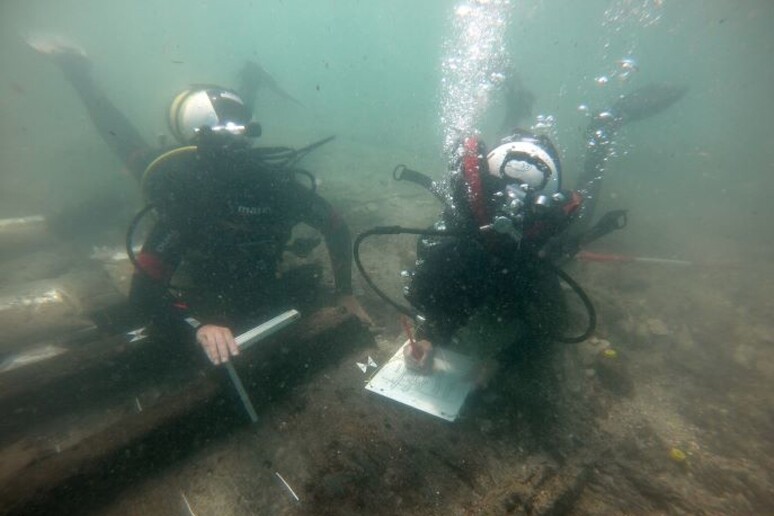The wreck found last year off the
coast of Umag (Croatia) could date back to the 12th century.
This can be seen from the first data that emerged during the
archaeological campaign coordinated by the Umag civic museum
which involved an international team of expert underwater and
naval archaeologists. The research, started in 2022, was
concentrated along the southern side of the Sipar peninsula
(Croatia): on that occasion two breakwaters were identified and,
in the center of the body of water, the presence of a lighthouse
was hypothesized; it was this discovery that gave impetus to
future research, which in 2023 led to the identification of the
remains just two meters from the seabed.
The preserved part of the hull measures approximately 6x2
meters and is made up of elements of the bottom and one of the
two sides of the boat. No cargo on board, probably already
recovered in the past.
The research was conducted by the Universities of Split
(Croatia) and Udine. "The study of a complex machine such as a
wooden boat is always a challenge - commented the UniUd teacher,
Massimo Capulli - and doing it on the few remains preserved in a
submerged environment makes it even more educational" for the
students of Friulian university.
Analysis on the wreck were financed by the Ministry of
Culture and Media of the Republic of Croatia and the City of
Umag.
ALL RIGHTS RESERVED © Copyright ANSA





